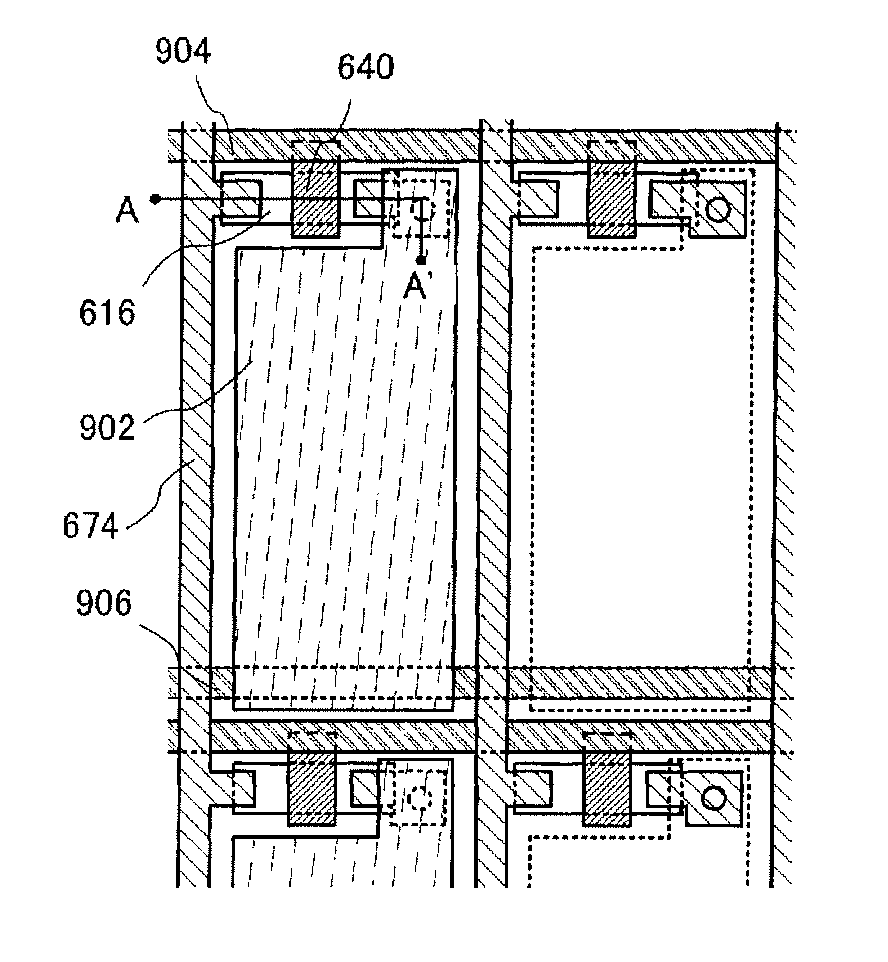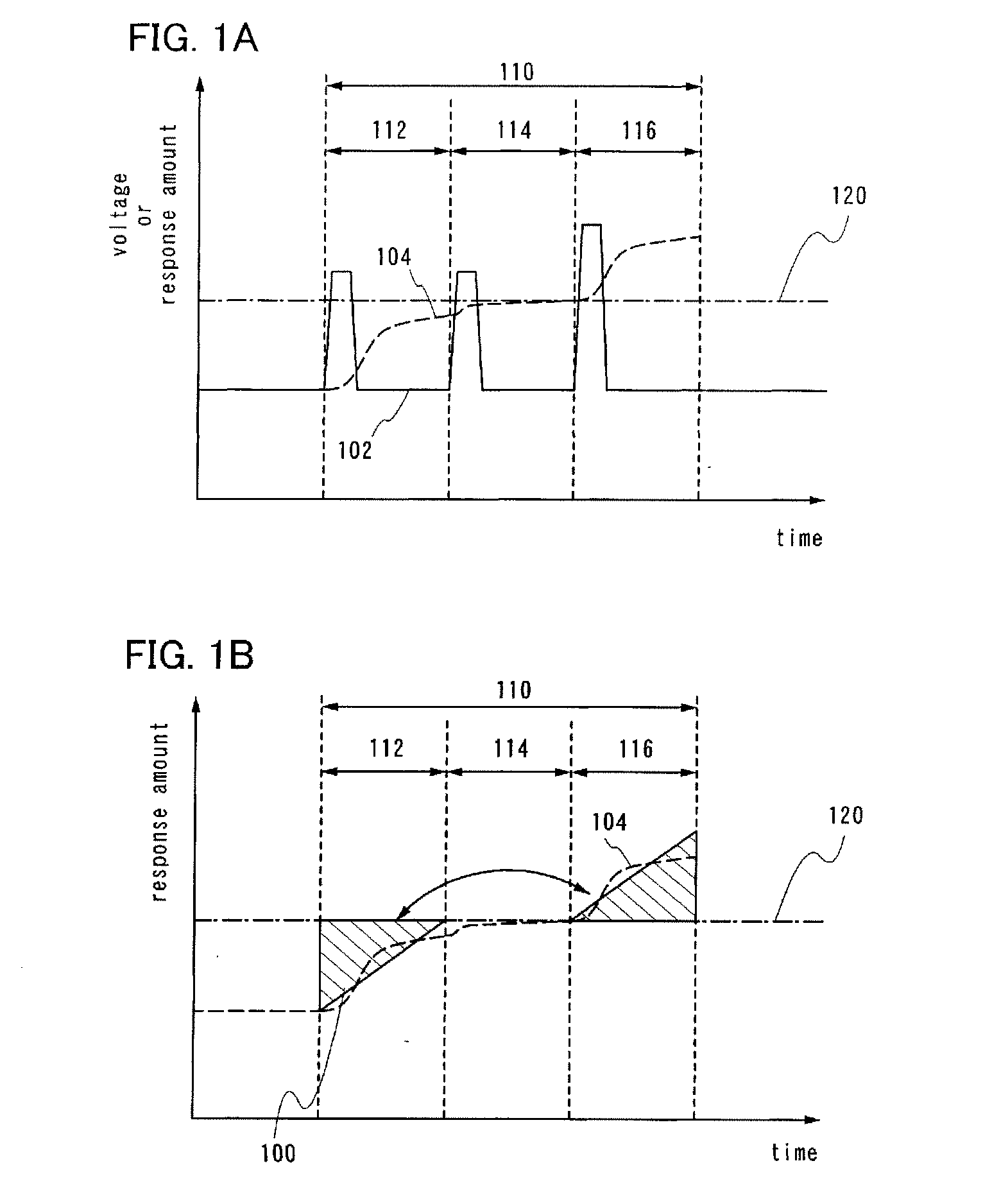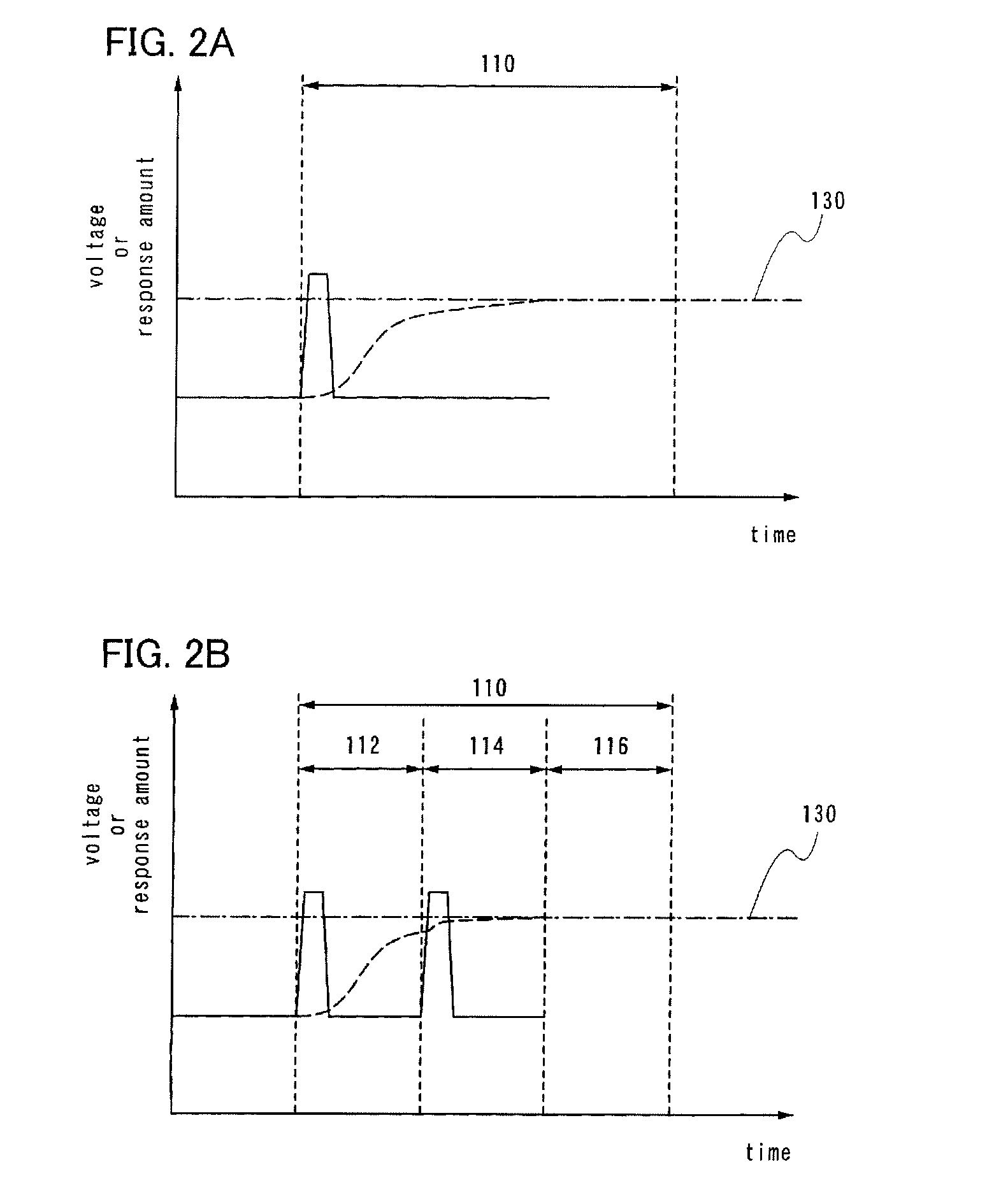Method for driving liquid crystal display device, liquid crystal display device, and electronic device
a liquid crystal display and liquid crystal technology, applied in the direction of electric digital data processing, instruments, computing, etc., can solve the problems of difficult to achieve the desired gradation display, increase power consumption, and fluctuation of applied voltage, and achieve high video performance and image quality. the effect of high quality
- Summary
- Abstract
- Description
- Claims
- Application Information
AI Technical Summary
Benefits of technology
Problems solved by technology
Method used
Image
Examples
embodiment mode 1
[0063]In the present embodiment mode, driving methods of the present invention and principles thereof will be described hereinafter using FIGS. 1A and 1B, FIGS. 2A and 2B, and FIGS. 3A and 3B.
[0064]In FIG. 1A, a relationship between voltage 102 (solid line) applied during a writing period of one pixel and a response amount 104 (dashed line) of the liquid crystal is shown for when a driving method of a liquid crystal display device of the present invention is used. Here, the response amount of the liquid crystal corresponds to display gradation for a liquid crystal display element. In addition, the horizontal axis represents time, and the vertical axis represents voltage and response amount. It is to be noted that in a liquid crystal display device in which active matrix driving is used, a signal voltage is input to a pixel electrode only during a selected period of a pixel, and a voltage input by a holding capacitor (also referred to as storage capacitor) is retained for periods the...
embodiment mode 2
[0086]In the present embodiment mode, a driving method differing from the method described in Embodiment Mode 1 will be described using FIG. 4.
[0087]First, one frame period is divided up into an n (n: integer, n≧3) number of subframe periods (FIG. 4). In the present embodiment mode, for sake of simplicity, a case in which one frame period 410 is divided into three subframe periods (a first subframe period 412, a second subframe period 414, and a third subframe period 416) will be described; however, the present invention is not to be taken as being limited to this case. It is to be noted that because rewriting of a pixel is generally performed at 60 Hz in a liquid crystal display device, the length of one frame period comes to be (1 / 60) s. In the present invention, because one frame period is further divided up into three subframe periods, driving comes to be performed at 180 Hz. That is, the length of one subframe period is (1 / 180) s. Needless to say, in cases where one frame perio...
embodiment mode 3
[0101]In the present embodiment mode, another driving method of the present invention will be described using FIGS. 5A and 5B.
[0102]First, one frame period is divided up into an n (n: integer, n≧3) number of subframe periods (FIG. 5). In the present embodiment mode, for sake of simplicity, a case in which one frame period is divided into four subframe periods will be described; however, the present invention is not to be taken as being limited to this case. Of course, cases in which one frame period is divided into three subframe periods can be applied, as well. It is to be noted that because rewriting of a pixel is generally performed at 60 Hz in a liquid crystal display device, the length of one frame period comes to be (1 / 60) s. In the present invention, because one frame period is further divided up into four subframe periods, driving comes to be performed at 240 Hz. That is, the length of one subframe period is (1 / 240) s. Needless to say, in cases where one frame period is divi...
PUM
 Login to View More
Login to View More Abstract
Description
Claims
Application Information
 Login to View More
Login to View More - R&D
- Intellectual Property
- Life Sciences
- Materials
- Tech Scout
- Unparalleled Data Quality
- Higher Quality Content
- 60% Fewer Hallucinations
Browse by: Latest US Patents, China's latest patents, Technical Efficacy Thesaurus, Application Domain, Technology Topic, Popular Technical Reports.
© 2025 PatSnap. All rights reserved.Legal|Privacy policy|Modern Slavery Act Transparency Statement|Sitemap|About US| Contact US: help@patsnap.com



